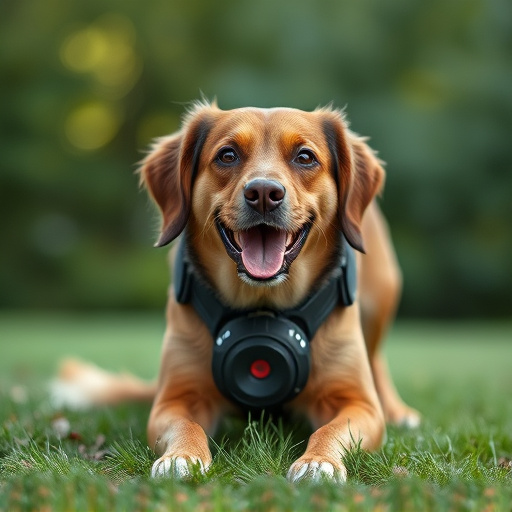Ultrasonic repeller devices effectively deter dogs from specific areas using high-frequency sound waves imperceptible to humans. For optimal results, place them strategically at eye level or slightly elevated in problem zones like gardens and entryways, ensuring coverage of target spaces. The best placement is crucial for successful dog exclusion while maintaining a humane approach, with consideration given to device range, power source, and environmental factors.
Introducing our comprehensive guide to ultrasonic dog repellent technology, a safe and innovative solution for keeping unwanted canine intruders at bay. This article delves into the science behind ultrasonic repellents, exploring how high-frequency sound waves deter dogs effectively. We uncover the optimal placement strategies for maximum protection, highlighting key areas where these devices excel. Additionally, we discuss the advantages and potential considerations, ensuring pet owners make informed decisions regarding this game-changing technology, especially in terms of best placement for ultrasonic repeller devices.
- Understanding Ultrasonic Technology for Dog Repellents
- Best Placement Strategies for Maximum Effectiveness
- Benefits and Considerations for Using Ultrasonic Repeller Devices
Understanding Ultrasonic Technology for Dog Repellents
Ultrasonic technology has emerged as a popular and effective solution for dog repellents, offering a humane and non-toxic approach to keeping canines at bay. This innovative method utilizes high-frequency sound waves that are inaudible to humans but can be sensed by dogs, creating an unpleasant experience that discourages them from entering specific areas. The technology works by emitting a range of ultrasonic tones, often varying between 22 and 64 kHz, which are designed to trigger a natural aversion response in dogs without causing any harm.
When it comes to the best placement for ultrasonic repeller devices, strategic positioning is key. These devices should be placed in areas where dog intrusions are a problem, such as gardens, patios, or entryways. Positioning them at eye level or slightly elevated ensures maximum effectiveness as dogs have a harder time detecting and ignoring the ultrasonic signals from higher angles. Additionally, ensuring proper coverage of the target area is essential; some models offer adjustable ranges to cater to different-sized spaces.
Best Placement Strategies for Maximum Effectiveness
To maximize the effectiveness of ultrasonic dog repellent devices, strategic placement is key. Place the devices in areas where your dog frequently enters or tends to show aggressive behavior. Common spots include doorways, fences, and windowsills—areas where the ultrasonic sound can be projected directly at approaching dogs. Ensure the device is powered by a reliable source, either through a battery or an AC adapter, for consistent operation.
Consider the range of the device and position it accordingly. Most ultrasonic repelents have a range of about 10-15 feet. Place them close to potential entry points or problem areas to ensure the sound reaches any intruders. Additionally, aim the device at specific angles to target both approaching dogs from the front and sides, creating a protective barrier around your property.
Benefits and Considerations for Using Ultrasonic Repeller Devices
Ultrasonic repeller devices offer a unique and modern approach to keeping dogs away from certain areas, making them an attractive option for many pet owners and property managers. One of the primary benefits is their non-toxic and humane nature; they emit high-frequency sound waves that are typically inaudible to humans but can be irritating or uncomfortable for dogs, encouraging them to stay clear. This technology is especially useful in areas where traditional repellents may not be practical, such as indoor settings or places with frequent human traffic.
When considering the best placement for ultrasonic repellent devices, it’s crucial to understand their operation and limitations. These devices are most effective when strategically placed outdoors, around gardens, patios, or entryways, targeting specific problem areas where dogs tend to congregate or enter. They should be positioned at eye level or slightly elevated, as dogs are more likely to pick up on the sounds in these locations. Regular testing and adjustments may be needed to ensure optimal performance, as environmental factors like wind or background noise can affect their effectiveness.
Ultrasonic repellers offer a safe, humane, and eco-friendly solution to keep dogs away from unwanted areas. By understanding how this technology works and implementing the best placement strategies, such as positioning devices near entry points and vulnerable spots, you can achieve maximum effectiveness. These devices are beneficial for homes, gardens, and public spaces, but it’s essential to consider factors like battery life, weather resistance, and potential noise levels. With proper selection and placement, ultrasonic repeller devices can help maintain a peaceful environment while ensuring the well-being of both pets and people.
